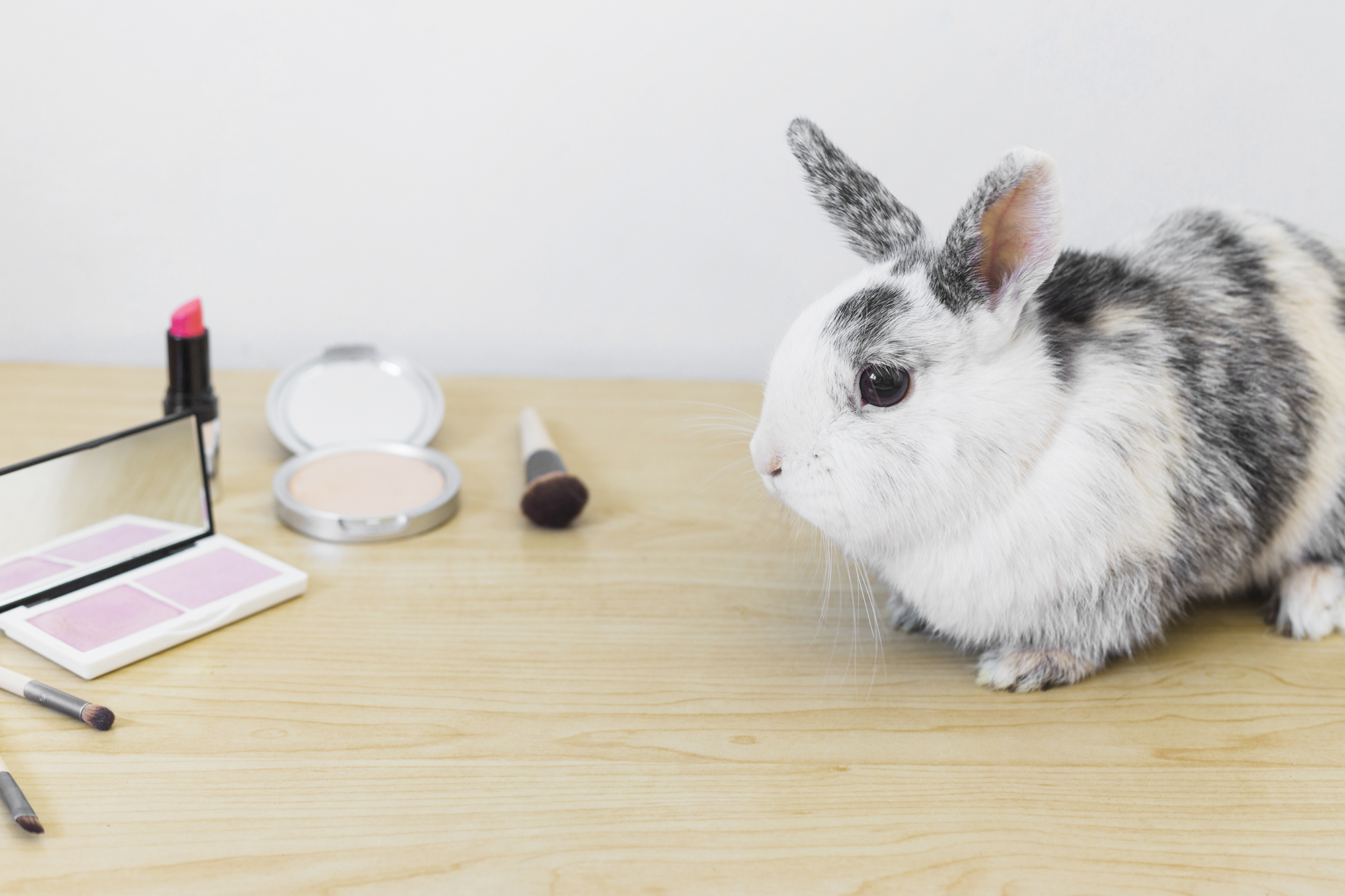The EU animal testing ban on Cosmetics

The ban on animal testing of finished cosmetic products has been in force since September 2004 and a testing ban on ingredients or combinations of ingredients since March 2009. As of March 2009, it is also prohibited in the EU to market cosmetic products and their ingredients which have been tested on animals but efforts to completely end animal use for cosmetic purposes go back a long time.
First EU provisions in relation to the marketing ban of cosmetics tested on animals were introduced to the Cosmetics Directive in 1993, with a foreseen application by 1998, and then postponed three times because alternative methods were not yet available.
The current provisions were introduced in 2003 and, finally, in 2004 the ban on animal testing of finished cosmetic products came into force. On 11th March 2009 the ban on animal testing of cosmetic ingredients and the marketing ban for all human health effects with the exception of repeated-dose toxicity, reproductive toxicity, and toxicokinetics, within the EU were implemented. The marketing ban became fully applicable as of 11 March 2013, irrespective of the availability of alternative non-animal tests.
The animal testing ban has led to increased research efforts to develop alternative testing methods, with effects going far beyond the cosmetics sector. Alternative approaches are generally associated with the principle of the “Three Rs”: fully replacing an animal test, reducing the number of animals needed in a test, or refining an animal testing procedure in order to reduce pain, suffering and distress.
The EU and the European Commission have been making significant and continued efforts towards these shared goals through a number of activities:
- EU funding for research;
- Hosting of the EU Reference Laboratory for Alternatives to Animal Testing (EURL ECVAM);
- Promoting international harmonisation of regulatory testing requirements;
- Collaborating with European trade associations, and companies from seven industry sectors to accelerate the development, validation and acceptance of alternative approaches, under the European Partnership for Alternative Approaches to Animal Testing (EPAA).
The main alternative methods not using animals and relevant to cosmetic hazard assessment include in vitro, in chemico and in silico methods, and read-across, as well as the use of combinations thereof.
In the evolution of new test methods, five main steps are identified: test development, pre-validation phase, validation phase, independent assessment and finally progression towards regulatory acceptance. In the EU, the ECVAM is the responsible body for coordinating the scientific validation of new alternative testing methods.
The full implementation of the animal testing ban was truly a milestone in cosmetic regulation. However, although science is developing quickly, there are still some challenges to overcome. In fact, alternative methods are not yet available to predict all the effects of a chemical substance on the human body and concerns keep being raised around the interface between the Cosmetic Regulation and the European Chemicals Agency (ECHA) Registration, Evaluation and Authorization of Chemicals (REACH) Regulation whose requirements for some endpoints have been threatening ban.
There is still a need to call for more resources to be allocated to alternatives research and to speed up validation and acceptance processes, so we can finally start thinking about a global ban on animal testing.
References
European Commission. Ban on Animal Testing.
European Commission. Animals used for scientific purposes.
European Commission. Animals used for scientific purposes - EU activities to advance alternatives.
Chave, J. (2018). The animal testing ban five years on.
European Commission. EU Reference Laboratory for alternatives to animal testing.
![[Logo Cosmedesk]](/media/ljbbhnk4/logo-cosmedesk.svg)